Often forgotten among the many great holes at Augusta National is the short par-4 third. “Flowering Peach” has remained true to Alister MacKenzie and Bobby Jones’s original design through the years, and although it is only 350 yards, it can play as one of the tougher holes at the Masters. In an era of professional golf when distance off the tee rules, No. 3 still manages to provide an interesting and equitable test for all types of players.
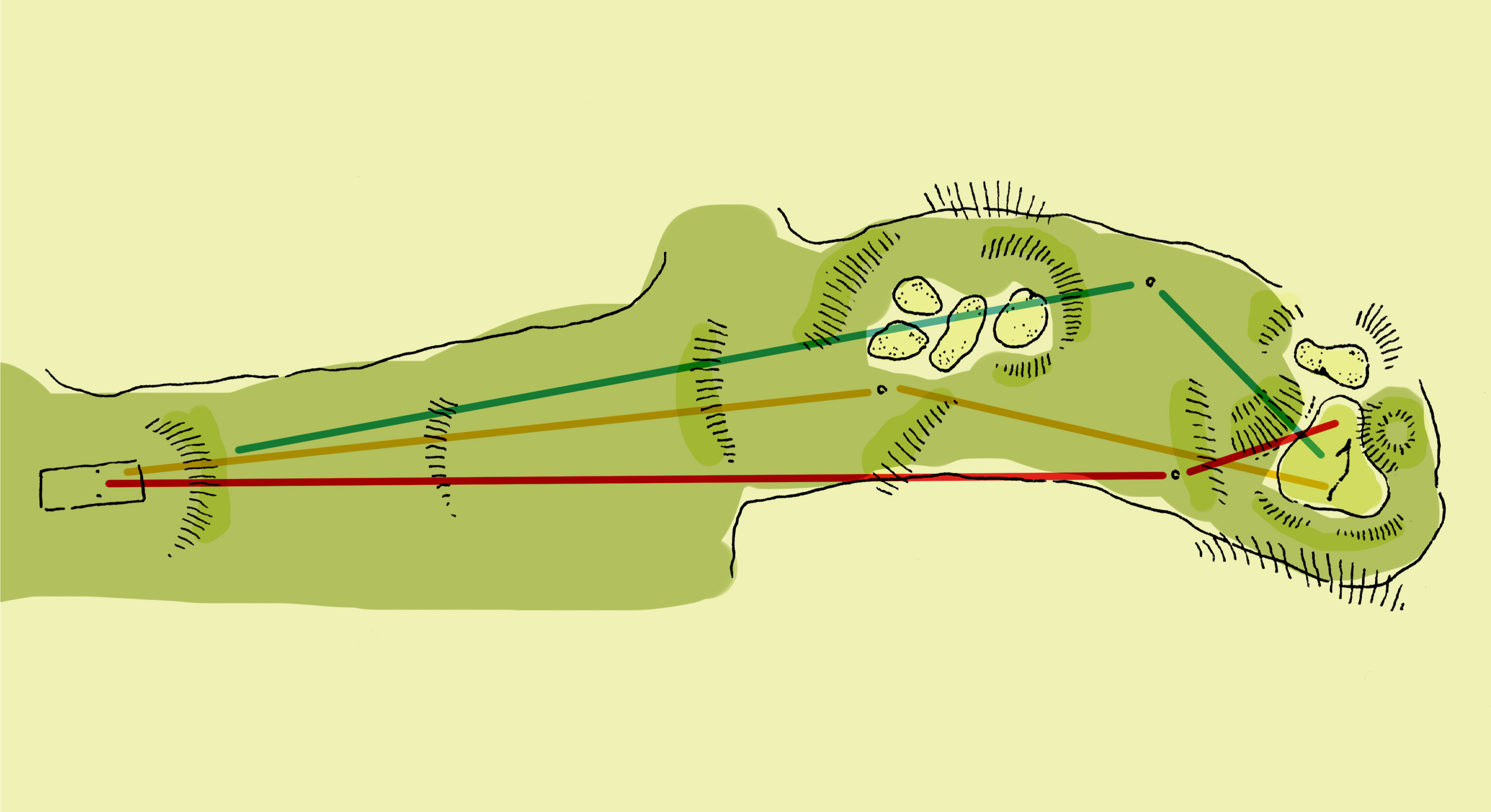
No. 3 at Augusta National. Illustration: Cameron Hurdus
The options
Off the tee, the player has three options:
- Lay up short of the bunkers, leaving a full wedge into the green
- Drive it past the the bunkers and into the valley short of the green in order to obtain a shorter approach
- Under the right conditions and with enough length, give the green a go
The best option changes from one day to the next based on pin position and wind direction. This strategic complexity has been enhanced for the 2022 tournament by changes to the mowing lines and the green. Additional short grass up the left and a more severe false front create excellent day-to-day variety for different pin positions.
The green
The third green is perched beautifully on a small ridge. It is quite shallow and has numerous interior contours, but the general movement runs away and to the player’s left. There are three distinct sections: front left, front right, and back right. Depending on which section is pinned, the ideal play off the tee may change.
-
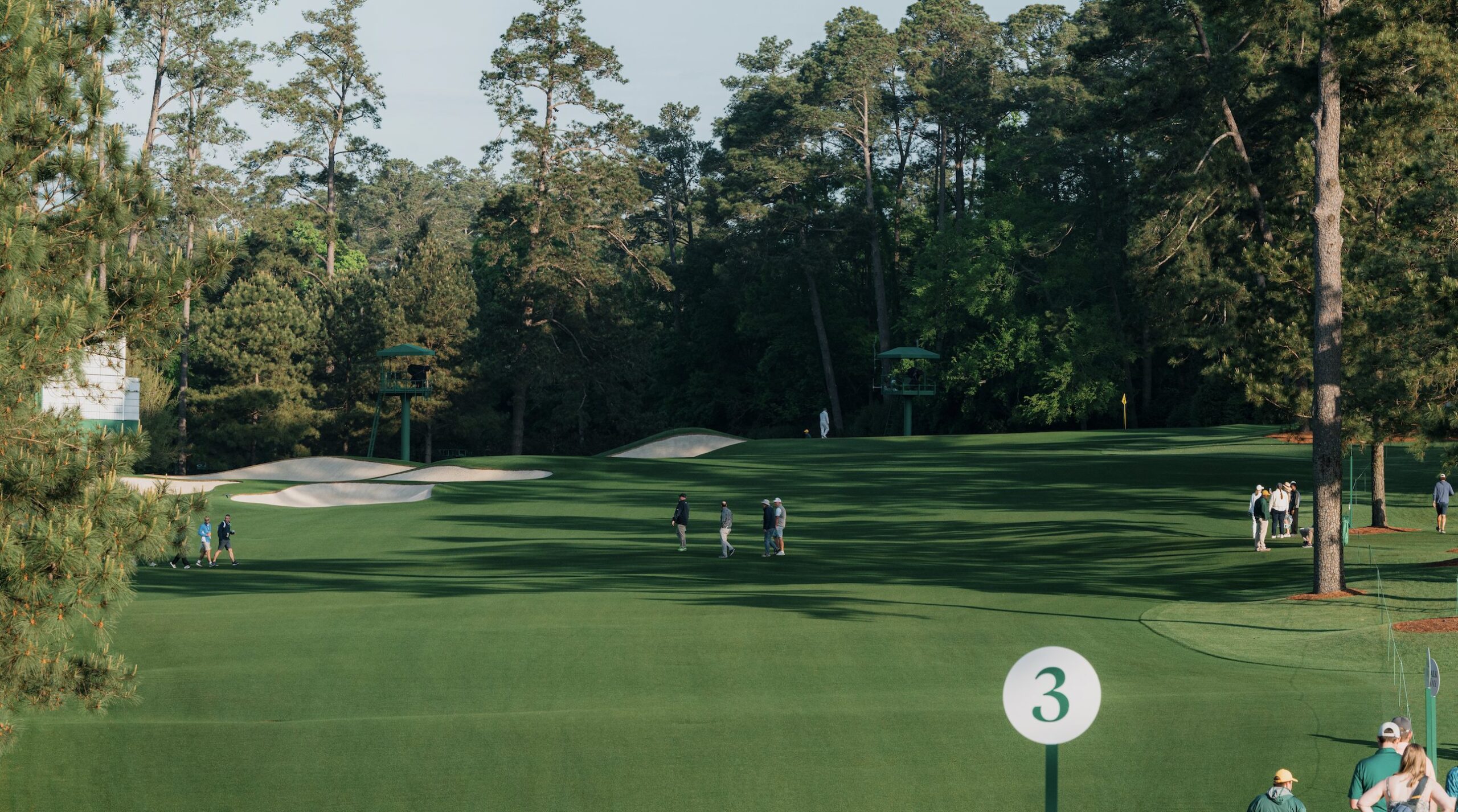
Tee shot on No. 3
-
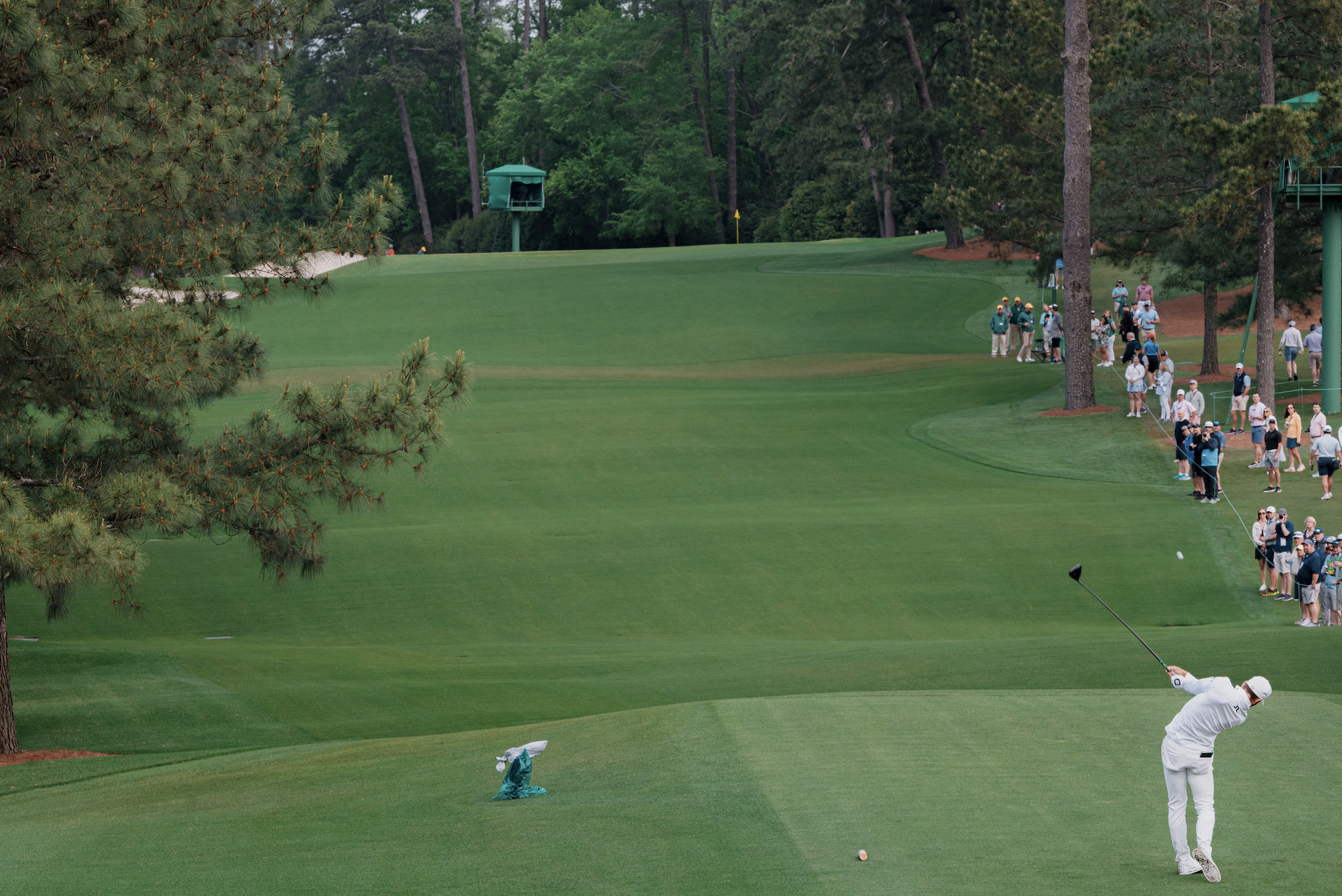
Camilo Villegas tees of on No. 3
The margin of error on the approach is razor thin. Anything short will come back and anything long will run away. Once the player is on the green, the challenge doesn’t end. The intricate contours create very small targets. Only great shots are rewarded, whereas slightly inaccurate approaches lead to difficult two-putts.
The green’s shallowness and front-to-back slope make the semi-blind half wedges from options A and B tricky, and downright hard when the flag is up front or in the left section.
The land
Augusta National’s greatest asset is its remarkable rolling property, which allowed MacKenzie and Jones to use the ground as a subtle challenge for world-class players. The third tee sits in a valley, and the fairway runs to the top of a ridge. From there, the hole drops sharply into another valley before once again rising to the green. In addition, the terrain cants from right to left throughout.
The most desirable place to approach the green shifts daily, with each spot presenting distinct challenges. On the ridge near the bunkers, players can find a flat lie and a full wedge. Pushing a tee shot past the ridge will lead to a pitch shot up the hill from a severe right-to-left lie. These are drastically different shot types, and some players may prefer one to the other.
-
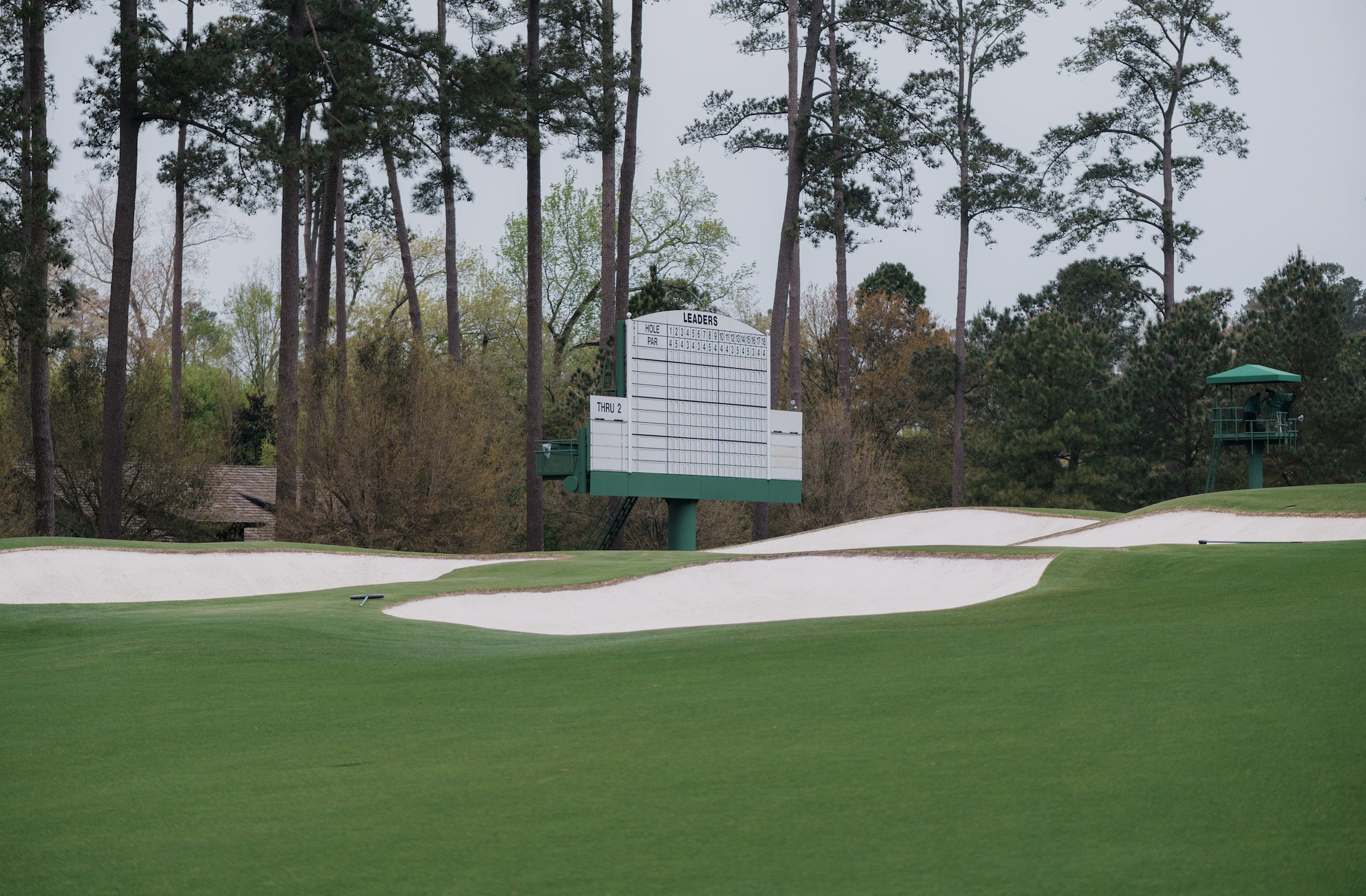
Left of the landing area
-
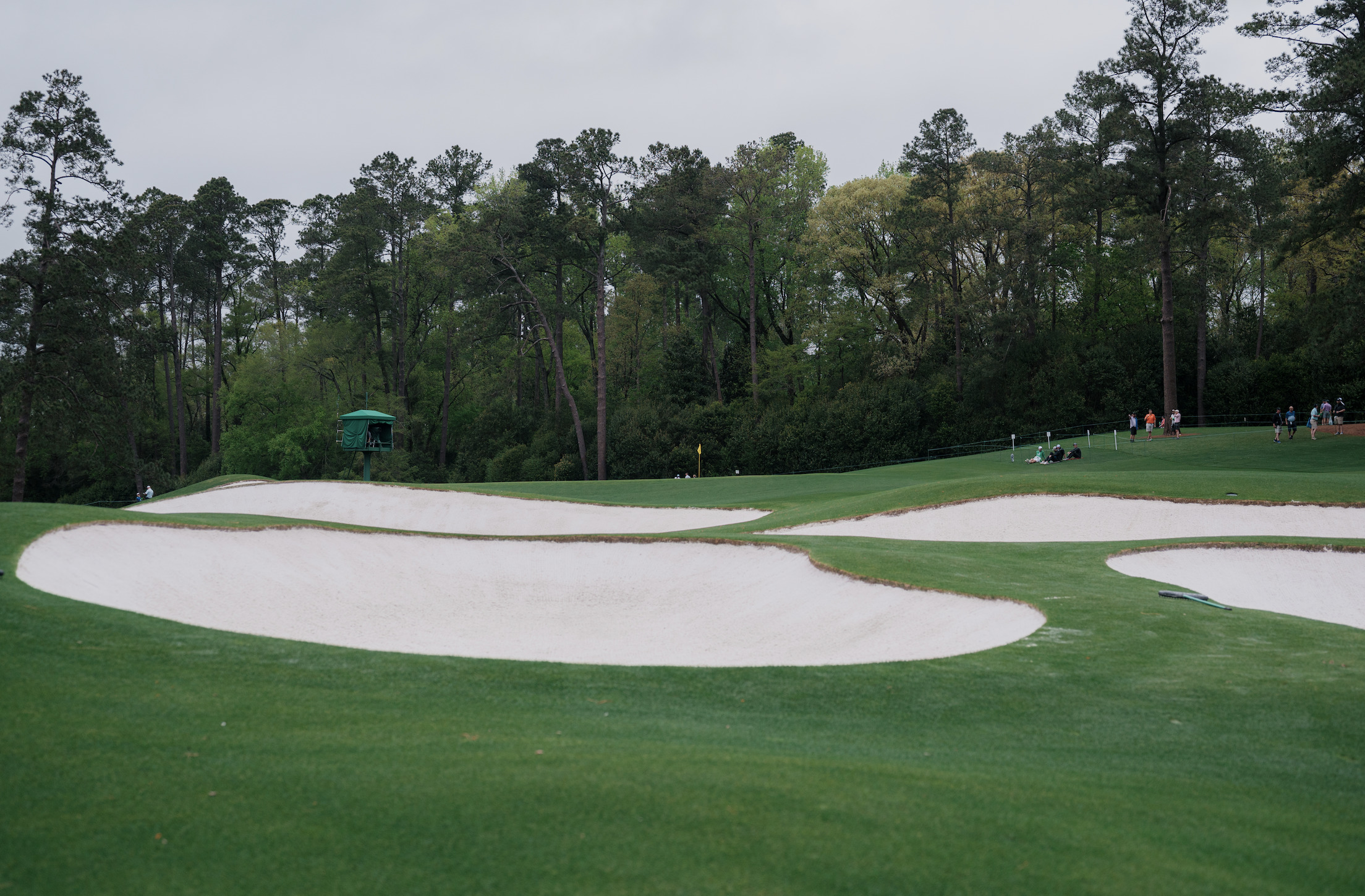
View from short left of the bunkers on No. 3
-
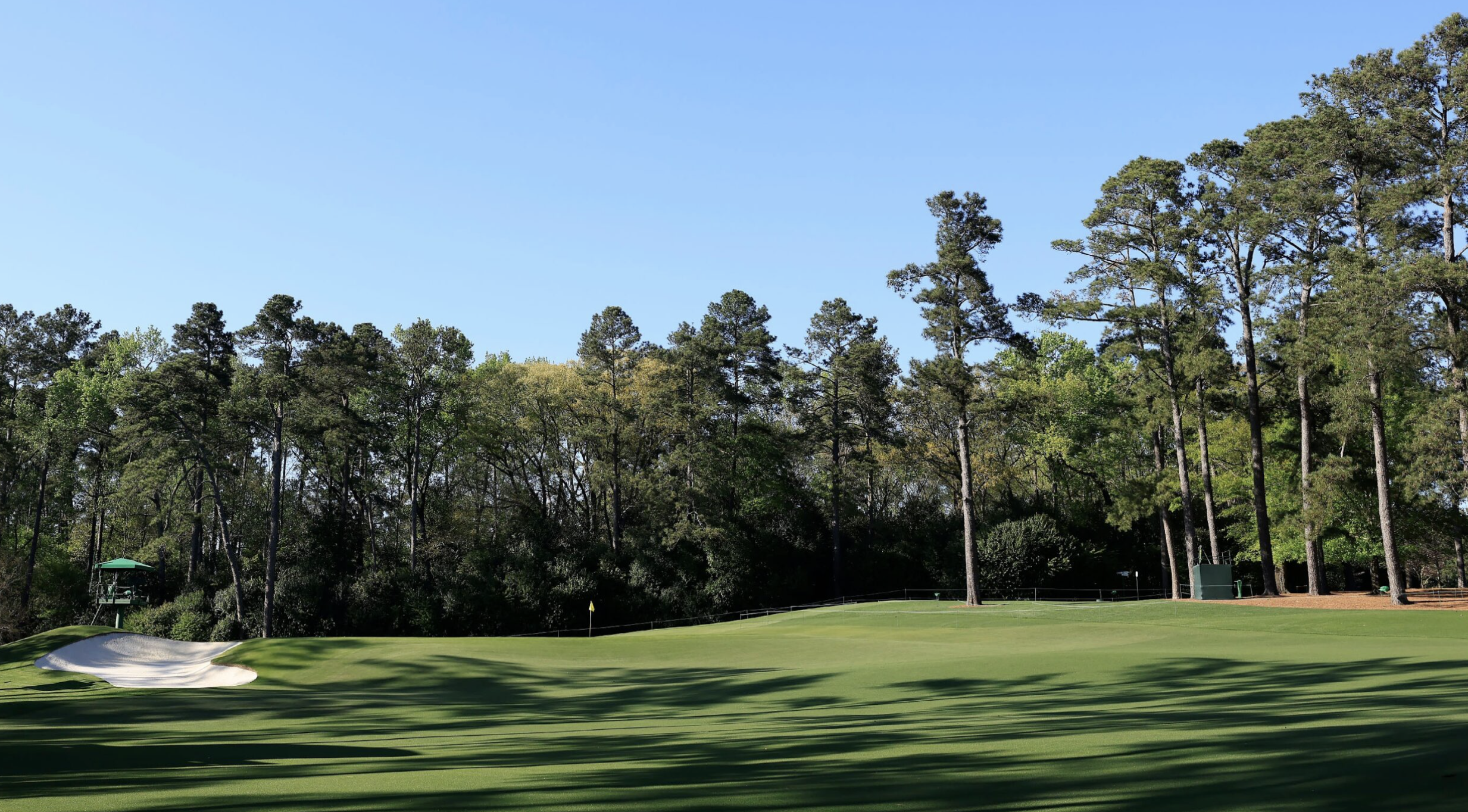
Approach to No. 3. Courtesy of the Masters Tournament
-
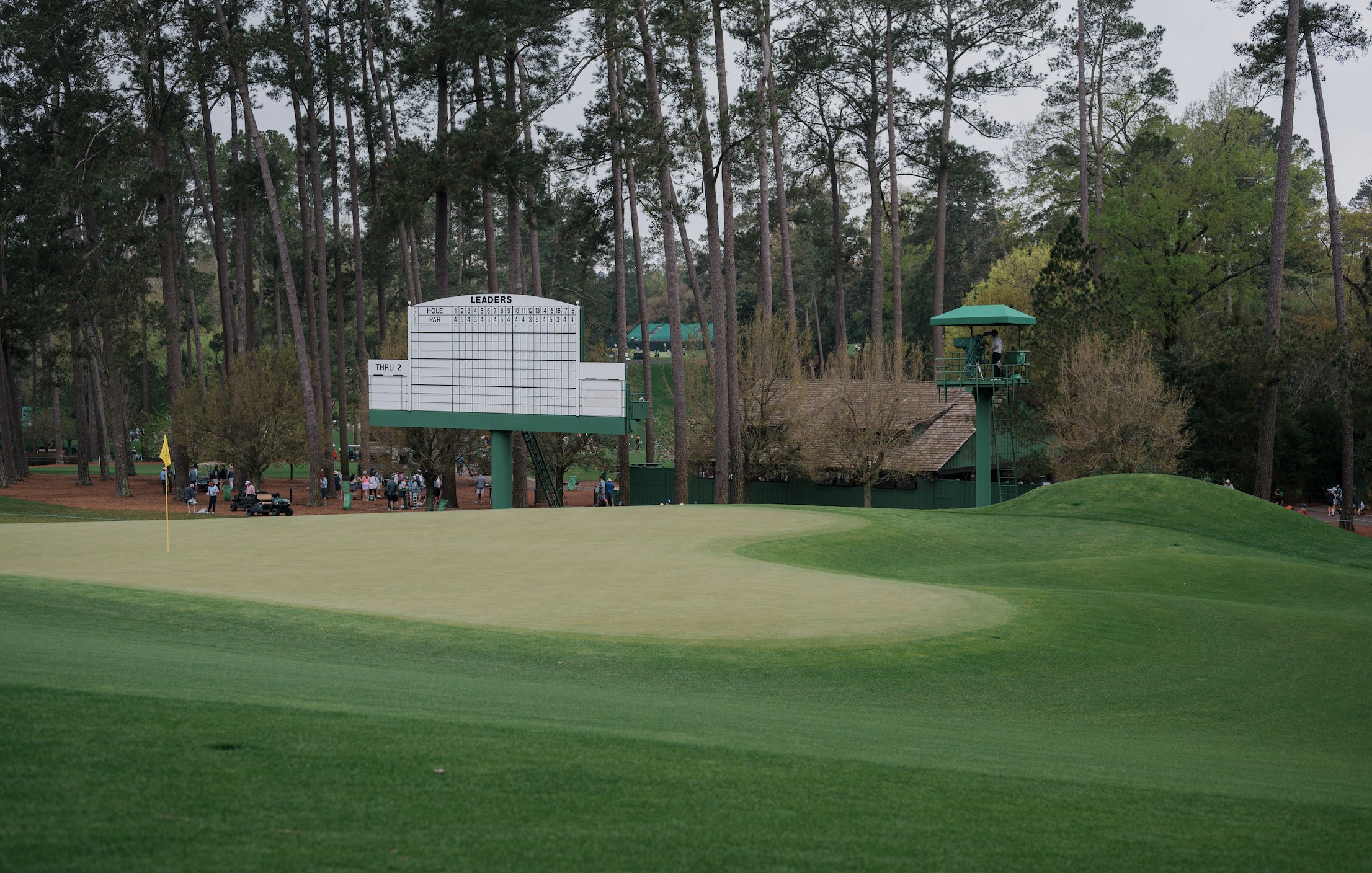
Behind the third green
The bunkers
Originally, Augusta National had only 22 bunkers. The third hole had just a single large one on the left side, which guarded the ideal angle of approach. Today, there are four bunkers that occupy that location. To clear the bunkers, it’s a 280-yard carry from the tee. That’s why option A, the layup, is popular on some days.
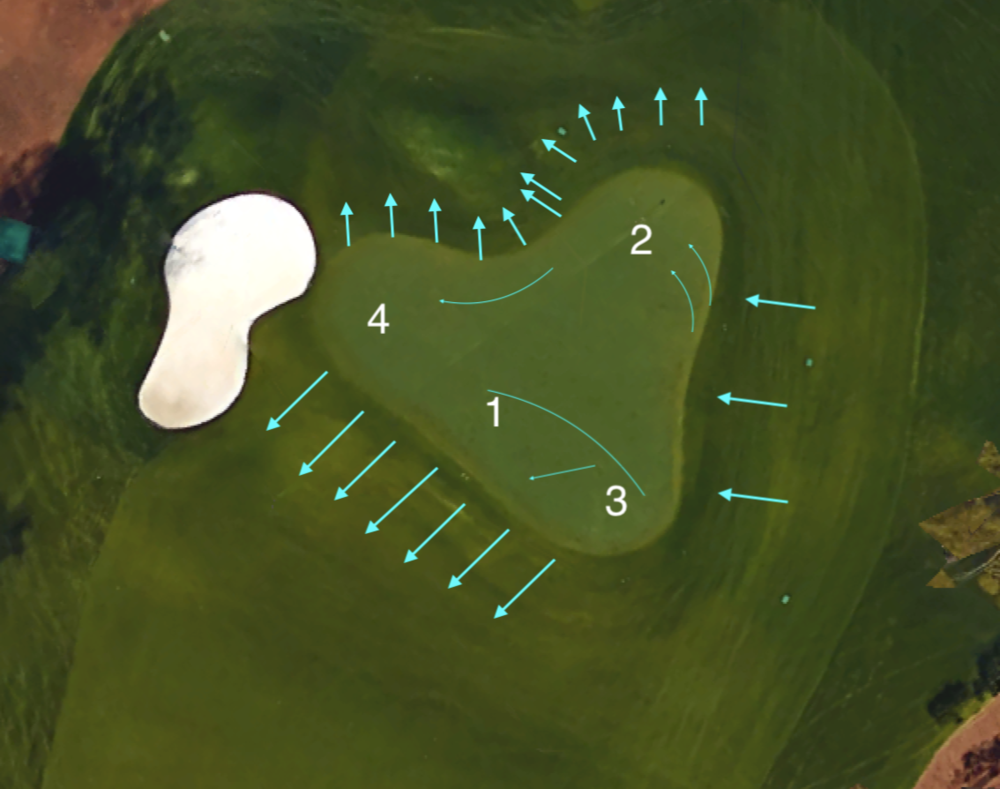
An aerial view of the third green at Augusta National
The pin positions
Augusta National typically uses the four pins shown in the graphic above on the third hole.
Pines 1, 3, and 4 are the most difficult because all are on a spine that sends short balls rolling back down the hill. Of these pins, the right one is slightly easier because the player can use the contours right of the green to feed shots in. For setting up an approach to the front pins, aggressive tee shots up the left side or even over the green can work out well.
The back-right pin (2) is the easiest overall because it gives players space for a low, spinning wedge. The best place to hit this shot from is over the fairway bunkers and left of the green, especially since short grass was added there in 2022. This spot opens up beautifully for birdie chances.
The traditional Sunday pin (4) is typically the most difficult. The contours in front and behind can send shots scurrying long or short. Short leads to a chip up a steep hill; long contends with a smaller slope but a putting surface that runs away.
In 2022, Augusta National reworked the third green slightly. Over the years, a small lip had built up at the front of the green, which saved shots from tumbling back down the hill. The club has now restored a floating edge there, reducing the margin for error as well as the appeal of what had become a popular strategy: just hit it hard off the tee and get the ball as close as possible to the green. Now we could see more players laying up on Sunday because the best angle into the pin may be from the right side of ridge in the fairway. From there, the green is longer and roomier. The hard part is having the spin control to help the ball stay in that back-left corner.
There’s no easy option, so some players will continue to be aggressive off the tee, while others will hold back. Sunday at the third hole should be a more compelling watch thanks to the recent changes.
◊
No. 3 at Augusta National demonstrates that short doesn’t mean easy. The sloping green, impactful fairway bunkering, and intelligent use of the land combine to create an array of options and possibilities. This hole is an excellent example of how Alister MacKenzie and Bobby Jones’s original design can only be tamed through thoughtful play.
More Masters coverage from The Fried Egg team:
The Greatest Play-Caller in Golf
Takeaways From Fred Ridley’s Masters Press Conference
The Art Behind Augusta’s Roars: Focal points in Alister MacKenzie’s routings
The 8th hole at the Masters reveals the limitations of sorting golf courses into buckets


 by
by 
